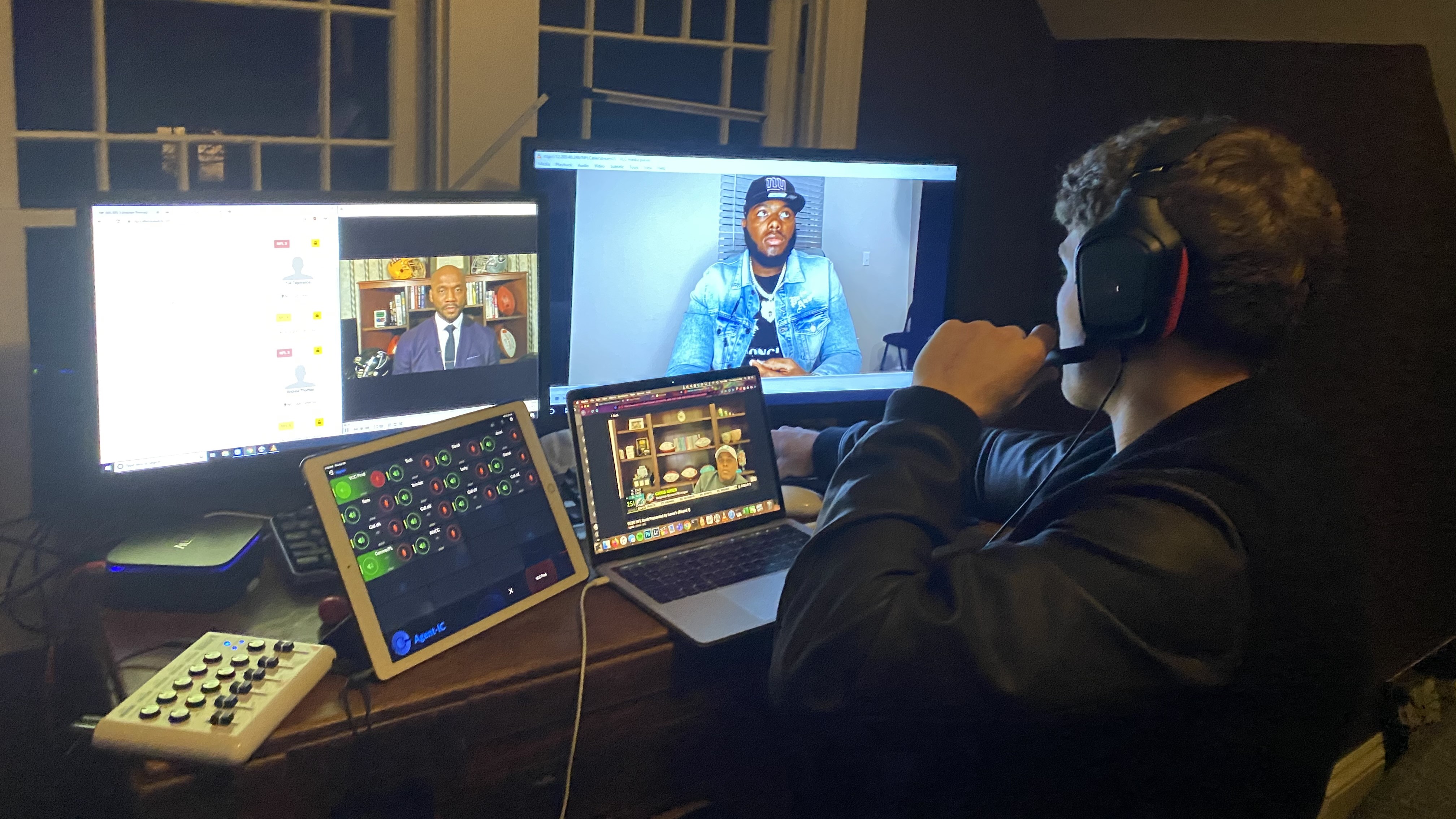VCC Leverages AJA Video HELO, ROI in Remote Workflows
HELO plays a crucial role in monitoring the quality of all the video calls

PALISADES, N.Y.—The Video Call Center (VCC) is assisting content producers in meeting the challenge of integrating video shot with smartphones, tablets and laptop computers into broadcast-quality productions during the COVID-19 pandemic by combining tools like the AJA Video HELO H.264 streamer/recorder and ROI scan converter with its own video call production platform, VCC announced.
“HELO is one of my favorite tools,” said Jackie Lennon, manager, Marketing & Administration, at the VCC. “It allows us to run our business the way we want, while also allowing our clients to reap the full benefits of our solutions.”
During live shows, the call center optimizes each remote based on the smart device in use, apps used to make calls and internet connections. It adjusts lights and camera angles to ensure clean video feeds—often making these adjustments in seconds, the VCC said.
“We can monitor, take care of quality and framing control from anywhere with an internet connection, without adding additional latency,” said Lennon, who added that the ability to record with HELO has been helpful.
PLUS: VCC Assists With Live Interviews for CBS Animated Series
The AJA Video HELO plays a crucial role in monitoring the quality of all the video calls, the VCC said. Before HELO was introduced into the VCC setup, endpoints and call producers needed to be in the same location. HELO makes it possible to monitor real-time feeds remotely from anywhere.
The AJA Video ROI mini-converter has enabled required video outputs and supports a diverse range of audio formats that clients request, the VCC added.
More than 30 AJA Video HELO units are located at the facilities of VCC clients, and a few more are on-site at the company’s headquarters to enable its Host Automation Tool (HAT) workflow, the company said.
More information is available on the AJA Video and VCC websites.
Get the TV Tech Newsletter
The professional video industry's #1 source for news, trends and product and tech information. Sign up below.
Phil Kurz is a contributing editor to TV Tech. He has written about TV and video technology for more than 30 years and served as editor of three leading industry magazines. He earned a Bachelor of Journalism and a Master’s Degree in Journalism from the University of Missouri-Columbia School of Journalism.

